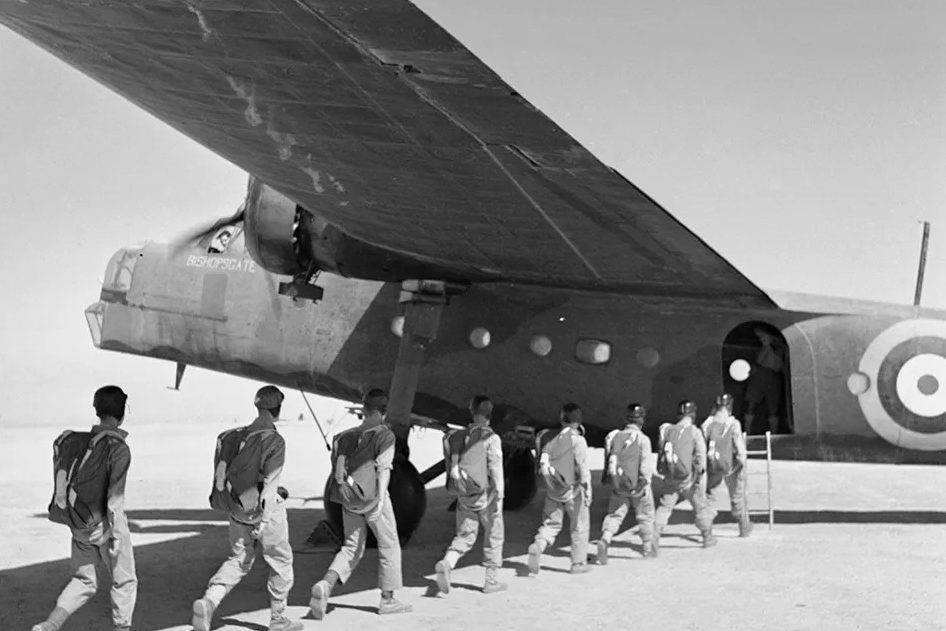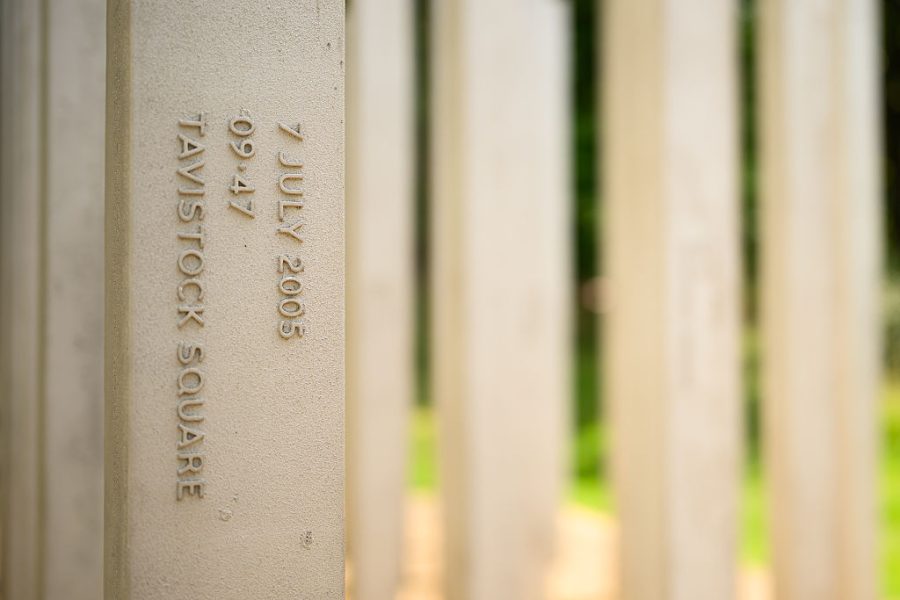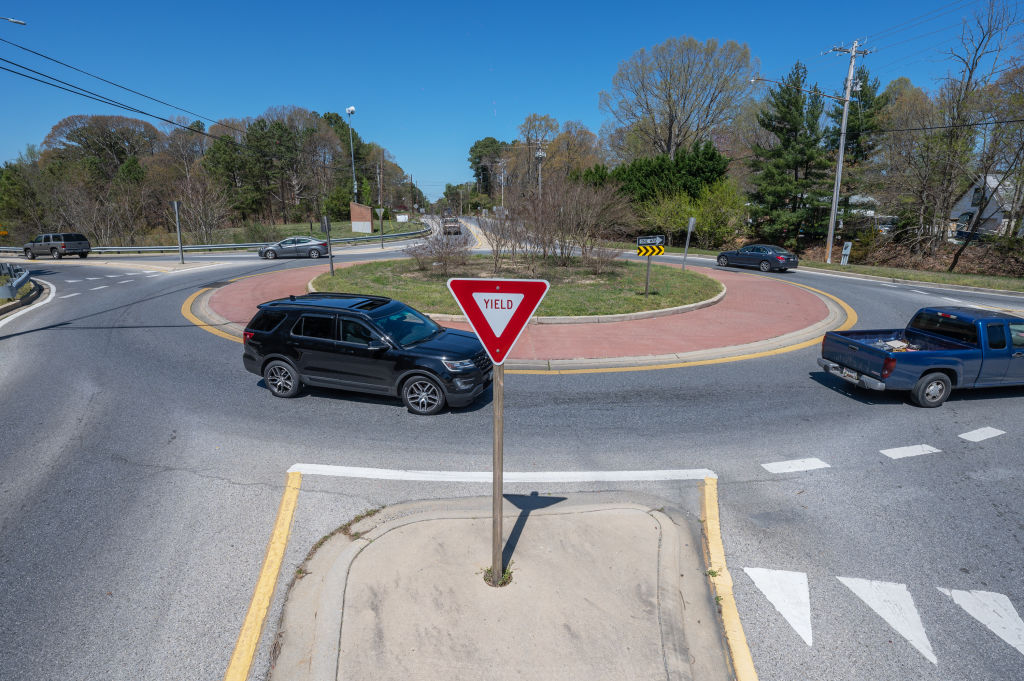“The boy Stirling is quite mad, quite, quite mad. However, in a war there is often a place for mad people.” Field Marshal Bernard Montgomery was referring to David Stirling, the man largely credited with raising the United Kingdom’s Special Air Service (SAS) in the summer of 1941.
Myth has always surrounded the formation of the SAS and one of the most abiding legends is that it was down to one man alone, David Stirling, whose L Detachment of six officers and sixty men grew into 1SAS. Gavin Mortimer’s vivid and meticulously researched book, 2SAS, does a good deal to redress the balance. It acknowledges the importance — too long overlooked — of David’s eldest brother, Bill Stirling, who was to command 2SAS, and other remarkable men who were among the SAS’s founding fathers.
The difference in character and temperament between the brothers was stark. David was charismatic, brazen and adept at self-promotion. It was typical of him that he should choose The Phantom Major as the title of his biography, a moniker apocryphally given to him by Field Marshal Erwin Rommel. Earlier this year, the popular BBC series SAS: Rogue Heroes, based on the book by Ben Macintyre, did little to dispel the image of David as an attractive, buccaneering figure without whom the SAS would never have been raised. Bill, however, was thoughtful and steadfast, a good judge of character who knew that planning and attention to detail were key to successful guerrilla operations behind enemy lines.
If a number of senior officers shared the belief that the nature of World War Two, particularly the desert campaign, offered considerable scope for guerrilla warfare, few agreed on what form it should take. Churchill, never short of memorable phrases such as “set Europe alight,” “butcher and bolt” and “attack the soft underbelly,” did not foresee how many irregular forces his words would spawn: the Special Operations Executive (SOE), the Commandos, the Long Range Desert Group (LRDG), the Special Boat Squadron (SBS), Popski’s Private Army (No. 1 Demolition Squadron) and the SAS. They would compete for resources and influence, and confusion of effort was inevitable. It all got quickly out of hand, not helped when David Stirling, forgetful of the need to post sentries, was caught napping in a wadi, along with thirteen of his men, by a company of German paratroopers drafted into North Africa to combat the SAS and LDRG.
It was time to clean up the chaos. In this, the SAS could not have found a better man than Bill Stirling. His sharp, shrewd, military mind had seen how a small guerrilla force could complement a main offensive. A memo from him to Allied Forces HQ, headed “Targets,” demonstrated a clarity of thought hitherto lacking in special forces planning:
The strongly guarded point is not the best objective, it is far more effective to derail several trains over 100 miles than attempt to demolish a heavily guarded viaduct.
It is essential to exploit success, better to deal with each aerodrome simultaneously than wait for the enemy to take precautions.
And under the heading, “Casualties,” he also wrote:
The good operative takes some time to select and train; no one should be expended lightly. No operation will be laid on without an even chance of success.
Operations were nevertheless fraught, hazardous and often strangled from the outset because the preferred method of inserting special forces was by parachute. This was too open to chance, poor navigation, high winds and bone-cracking landings, as the following account makes clear:
The red light turned green and I was out with a bellow from 7,000ft up, the bloody wind blew me straight into a chimney, I knew I’d done myself enough damage, I crashed to the ground, cursing with a sore knee to add to cracked ribs, hobbling away into the darkness to find my comrades, the faint wail of sirens in the distance.
There were any number of failed operations to add to the birth pains of the SAS. One typical post operative report read: “eighteen lost, a few telegraph poles destroyed.”
On October 18, 1942, Hitler issued his Commando Order (Kommandobefehl). He decreed that all men caught operating in so-called commando raids were to be executed. The extraordinary courage shown by those about to be shot makes for harrowing reading: “Corporal James Shortfall faced his executioners in silence, staring straight ahead at the ten rifles pointed at his body.” In one operation alone, thirty 2SAS officers and men were shot on capture.
What manner of men made up the special forces in those murderous days? Mortimer paints some memorable word portraits of members of the SAS. Some are well known, such as Paddy Mayne DSO & Three Bars, who would get rid of anyone whom he considered “too wet, weak and windy.” Others, less so, such as Pete Tomasso, handsome, sporting a Ronald Coleman mustache, half Italian from a well-known Glasgow ice-cream family; and Bob Tong, who joined, aged twenty, and who had formed a dance band before the war with his sister. There’s a fine photograph of him in 2013 saluting his fallen comrades. The book contains many other wonderful images.
2SAS learned from bitter experience. Later operations in Italy blowing up key bridges were highly successful. Bill Stirling should have been a satisfied man, but he overplayed his hand with senior Allied command, in particular with “Boy” Browning, Commander 1Airborne Corps, whom he accused of not knowing how to manage the SAS. It was a clash between two uncompromising characters, and both should have known better. Browning, who’d won the DSO aged nineteen, could have been more sensitive in his handling of Stirling. Stirling was sacked on the spot, just two days before D-Day. It was a sad end to his career.
Those who shout loudest tend to get heard, and David Stirling gave a resounding voice to his own achievements at the expense of his brother. But Bill’s legacy to the SAS is nevertheless inviolate. The British army today may be a shell of its former self, but its special forces, born out of World War Two and men like the Stirling brothers, still excite the imagination, and command the admiration and respect of armies across the world. Gavin Mortimer has certainly done the history of the SAS justice in this book.
This article was originally published in The Spectator’s UK magazine. Subscribe to the World edition here.

























